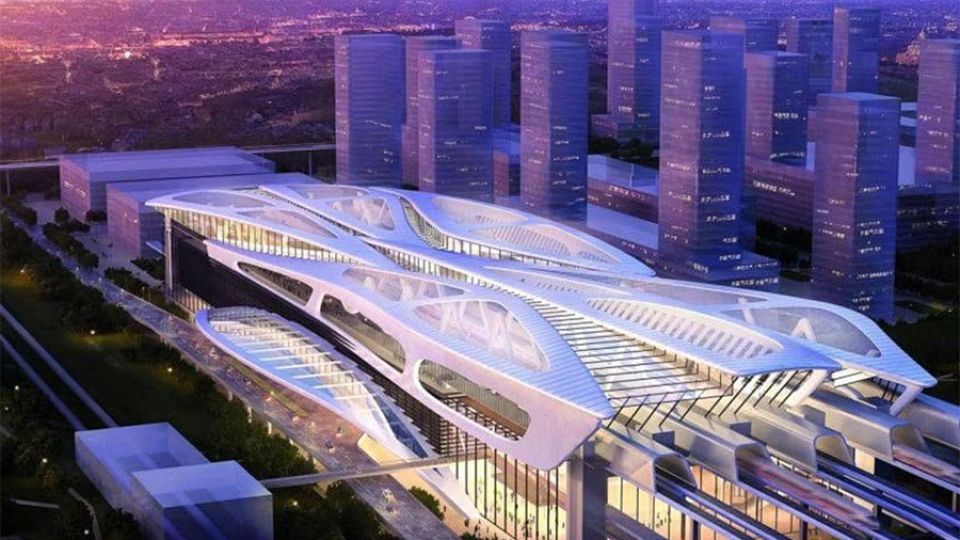February 20, 2024
SINGAPORE – Malaysia’s plan to revive the Kuala Lumpur-Singapore high-speed rail (HSR) by relying wholly on private sector financing is unlikely to get off the ground, say industry insiders, with fresh bidders for the project requesting government funding in their proposals.
According to MyHSR Corporation, the government-owned company in charge of developing and implementing the HSR, seven local and international consortia submitted their concept proposals at the close of its request for information (RFI) exercise on Jan 15. It declined to name the companies involved.
The RFI was held in order for the Malaysian government to assess the private sector’s ability to fully finance the project without state funds or guarantees. Prime Minister Anwar Ibrahim’s administration has said it is open to reviving the HSR, but it will not pay for the 350km-long line, which is estimated to cost over RM100 billion (S$28 billion).
It was reported that Japanese companies including East Japan Railway Company pulled out from the project just days before the Jan 15 deadline, describing it as “too risky” without the government’s financial support.
But other companies have ventured a bid, in the hope that the government will relent on its stance. Analysts say the bidders may propose and justify the need for financial support from the government as part of their submissions.
In a stock exchange filing on Jan 26, Berjaya Land announced that its 70 per cent-owned subsidiary Berjaya Rail (B-Rail) had formed a consortium with IJM Construction, Malaysian Resources Corp and Malaysia’s national railway firm Keretapi Tanah Melayu to submit a bid for the HSR.
Sources in the industry told The Straits Times that the B-Rail-led consortium has requested in its proposal that the government compensate it if the number of passengers falls below a minimum number.
“B-Rail believes it is impossible to build this rail without a government guarantee, given its large financial commitment. They have asked for a government guarantee, which then defeats the government’s purpose of using private funding to build the HSR,” said the source.
Another industry source said the B-Rail-led consortium is separately eyeing opportunities to acquire and develop land around the railway stations as another source of income.
ST has also learnt that YTL Corp, which in 2018 was appointed to be a project delivery partner to design and deliver civil works for the HSR before it was suspended, has put in a fresh bid for the project.
A highly placed source in YTL said the company has asked for some form of government financial support in its bid, to manage the mounting costs of building the line.
AmInvestment Bank analyst Alex Goh said no rail project in Asia has got off the ground without government funding.
Indonesia’s first HSR, the 142km-long Jakarta-Bandung line launched in October 2023, received government support in terms of land acquisition, he told ST. The US$7 billion (S$9.4 billion) project was developed by PT Kereta Cepat Indonesia China, a joint venture between a consortium of four Indonesian state-owned companies and China Railway International, a subsidiary of China Railway Group.
The Kuala Lumpur-Singapore HSR was terminated in 2021, after Malaysia requested that the project be postponed in 2018 due to its high cost. In July 2023, Kuala Lumpur said it was open to receiving proposals from private firms to revive the project.
Responding to this, Singapore’s then Acting Transport Minister Chee Hong Tat said in August 2023 that it had not received any new proposals from Malaysia for the HSR line.
“Singapore is willing to discuss any new proposals for a Kuala Lumpur-Singapore HSR from Malaysia in good faith, starting from a clean slate,” Mr Chee had said.
Analysts believe that private financing alone cannot revive the project. They say that in order for the HSR to be commercially viable, private companies would need state support for land acquisition, subsidies for train tickets, and maintenance of the infrastructure.
Mr Goh said: “Compulsory land acquisition on this scale requires federal and state government approvals and regulatory clearance.”
Based on its original plan, the rail track spans 335km across four states of Peninsular Malaysia, with the remaining 15km located in Singapore.
Without government funding and guarantees, the project costs would also surge due to higher interest rates for loans, said Ms Wong Muh Rong, managing director and founder of corporate advisory firm Astramina Advisory.
Servicing a RM100 billion loan would cost the consortium RM6 billion to RM7 billion a year on commercial rates, but only RM2 billion to RM3 billion a year if it is government guaranteed, Ms Wong estimated.
“It seems difficult for the private sector to make a decent return for such an investment,” she said.
It remains to be seen if the government can afford to help fund the HSR.
In October 2023, the government passed the Public Finance and Fiscal Responsibility Act that limits the country’s debt level to 60 per cent of gross domestic product (GDP), and financial guarantees to 25 per cent of GDP.
As at August 2023, total federal government debt stood at RM1.147 trillion, or 62 per cent of GDP, higher than this target.
Spending on the HSR will also affect the government’s future budgets, as allocations for priority sectors such as health and education could be trimmed, said economist Muhammed Abdul Khalid, a research fellow at the Institute of Malaysian and International Studies at Universiti Kebangsaan Malaysia.
He said Malaysia’s annual debt repayment, expected to reach RM49.8 billion in 2024, makes up more than 55 per cent of its entire development spending, compared with 38 per cent two decades ago.
“Malaysia simply can’t afford an HSR. It would be fiscally irresponsible for the government to fund it, and we will be passing the debt on to future generations to bear,” said Dr Muhammed.


